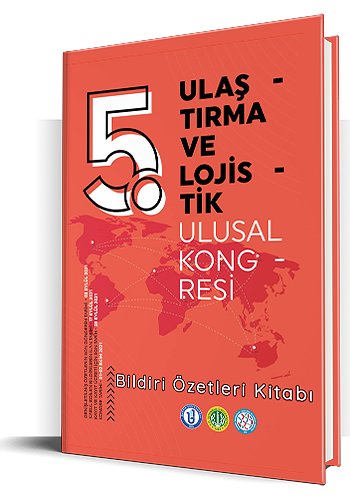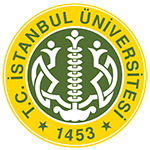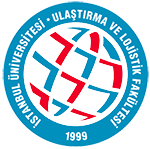
Ulaştırma ve Lojistik Kongreleri
- Türkçe
- Özet
- 2021
Biyofarmasötik Ürünlerin Tedarik Zinciri Yönetiminde Matematik Modelleme
Elifcan Göçmen Polat
Dr. Öğr. Üyesi, Munzur Üniversitesi, Tunceli, Türkiye
Onur Derse
Öğr. Gör., Tarsus Üniversitesi, Mersin, Türkiye
Biyofarmasötik ürünlerin, içeriğinde bulunan protein kararsızlığından dolayı dağıtımında soğuk zincir yönetiminin her kuralına uyulması gerekmektedir. Zincir kırıldığı zaman bu ürünler hem hasta sağlığı için hem de ekonomik olarak zarar yaratmaktadır. Bu çalışmada, taşıma, işletme ve envanter maliyetlerini minimize etmek için dağıtım merkezlerinden hastanelere optimal dağıtım rotaları ve envanter seviyeleri için bir envanter rotalama problemi önerilmiştir. Literatürde, envanter rotalama çalışmaları sıkça bulunmaktadır. Bununla birlikte, biyofarmasötik ürün dağıtım problemini envanter rotalama problemi olarak formüle eden çalışmaya rastlanılmamıştır. Önerilen matematiksel modelde, bozulma kısıtları ve maliyetleri amaç fonksiyonu ve kısıtlara eklenmiştir. Bu durum, bozulabilir ürünün envanter rotalama problemini formüle etmeyi sağlayacaktır. Çalışmanın ana katkısı, çoklu biyofarmasötik ürünlerini ele alan bir envanter rotalama problemi sunmaktır. Önerilen model önceki çalışmalardan farklı olarak; belirlenen zaman ufkunda minimum taşıma maliyetli taşıma planının oluşturulması, belirlenen zaman ufku boyunca her bir noktada tutulacak stok miktarlarının belirlenmesi, biyofarmasötik ürünlerde kullanılabilecek bir envanter rotalama problemi formülasyonu yaratılmasını sağlamaktadır. Bunun yanı sıra, uygulamadan veriler alınarak bölgesel bir biyofarmasötik ürün dağıtımı tedarik zinciri için önerilen yaklaşım kullanılmıştır. Oluşturulan modelin diğer çalışmalarda da kullanılabilirliğini göstermek amacıyla, farklı senaryolar altındaki durumu da irdelenerek uygulamada kullanılabilecek bir araç ortaya konulmuştur. Oluşturulan matematiksel model sonuçları örnek bir veri setinde denenmiş ve geliştirilen formülasyonun doğruluğu ve modelin problemin amacına uygun olarak oluşturulduğu test edilmiştir. Taşıma mesafesi yüksek olan noktalarda daha yüksek miktarlarda envanter tutulmaktadır. Depo ve depoya yakın hastanelerde ise talep nedeniyle daha düşük miktarda olsa envanter tutulmuştur. Tek bir araç tarafından birinci ve beşinci periyotlarda rotalama gerçekleştirilmiştir. Mesafelerin düşük olması nedeniyle tüm noktalar tek bir turda gezilebilmiştir.
Anahtar Kelimeler: Tedarik Zinciri Yönetimi, Biyofarmasötik, Matematik Model, Optimizasyon
Mathematical Modeling in Supply Chain Management of Biopharmaceutical Products
Due to the protein instability in the content of biopharmaceutical products, every rule of cold chain management must be followed in the distribution. When the chain is broken, these products cause damage both for the health of the patient and economically. In this study, an inventory routing problem is proposed for optimal distribution routes and inventory levels from distribution centers to hospitals in order to minimize transportation, operating and inventory costs. In the literature, inventory routing studies are frequently available. However, there is no study that formulates the biopharmaceutical product distribution problem as an inventory routing problem. In the proposed mathematical model, distortion constraints and costs are added to the objective function and constraints. This will enable to formulate the inventory routing problem of perishable product. The main contribution of the study is to present an inventory routing problem that addresses multiple biopharmaceutical products. The proposed model differs from previous studies; It provides the creation of a transportation plan with the minimum transportation cost in the determined time horizon, the determination of the amount of stock to be kept at each point during the determined time horizon, and the creation of an inventory routing problem formulation that can be used in biopharmaceutical products. In addition, the proposed approach for a regional supply chain of biopharmaceutical product distribution was used by taking data from the application. In order to show the usability of the developed model in other studies, a tool that can be used in practice has been put forward by examining the situation under different scenarios. The mathematical model results created were tested on a sample data set and the accuracy of the developed formulation and the model developed in accordance with the purpose of the problem were tested. Higher amounts of inventory are kept at points with higher transport distances. In the warehouses and hospitals close to the warehouse, on the other hand, inventory was kept at a lower amount due to demand. Routing was performed by a single vehicle in the first and fifth periods. Due to the low distances, all points could be visited in a single tour.
Keywords: Mathematical Model, Optimization, Supply Chain Management, Biopharmaceuticals


Bu çalışma, kullanan kişilere orjinal çalışmadan alıntı yaptıkları sürece, çalışmayı dağıtma, değiştirme ve üzerine çalışma hakkı tanıyan Attribution 4.0 International (CC BY 4.0) lisansı ile lisanslanmıştır.
İletişim
İstanbul Üniversitesi Ulaştırma ve Lojistik Fakültesi
İ.Ü. Avcılar Kampüsü 34320 Avcılar/İstanbul
ulk@istanbul.edu.tr
+ 90 (212) 440 00 00 - 19200


